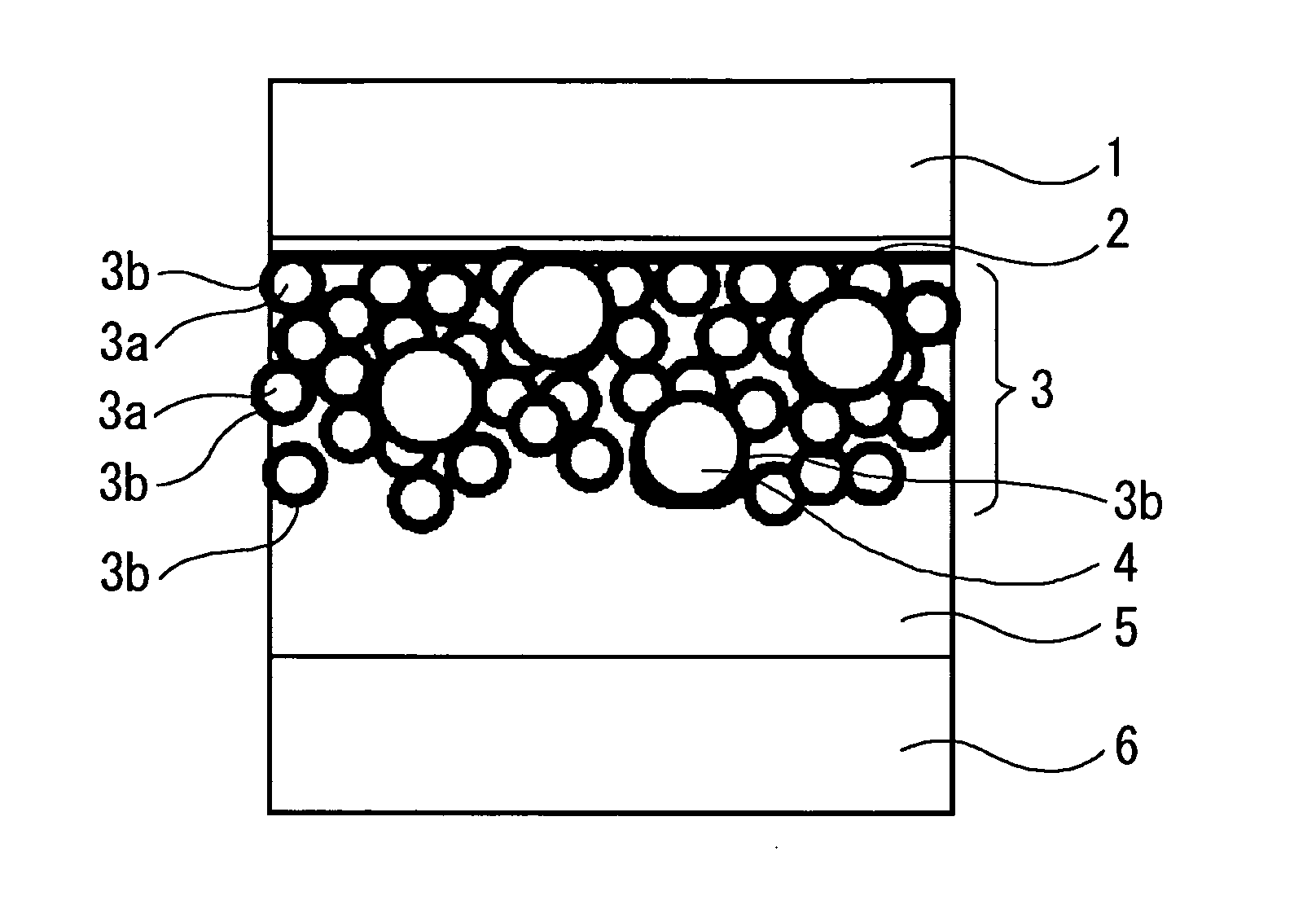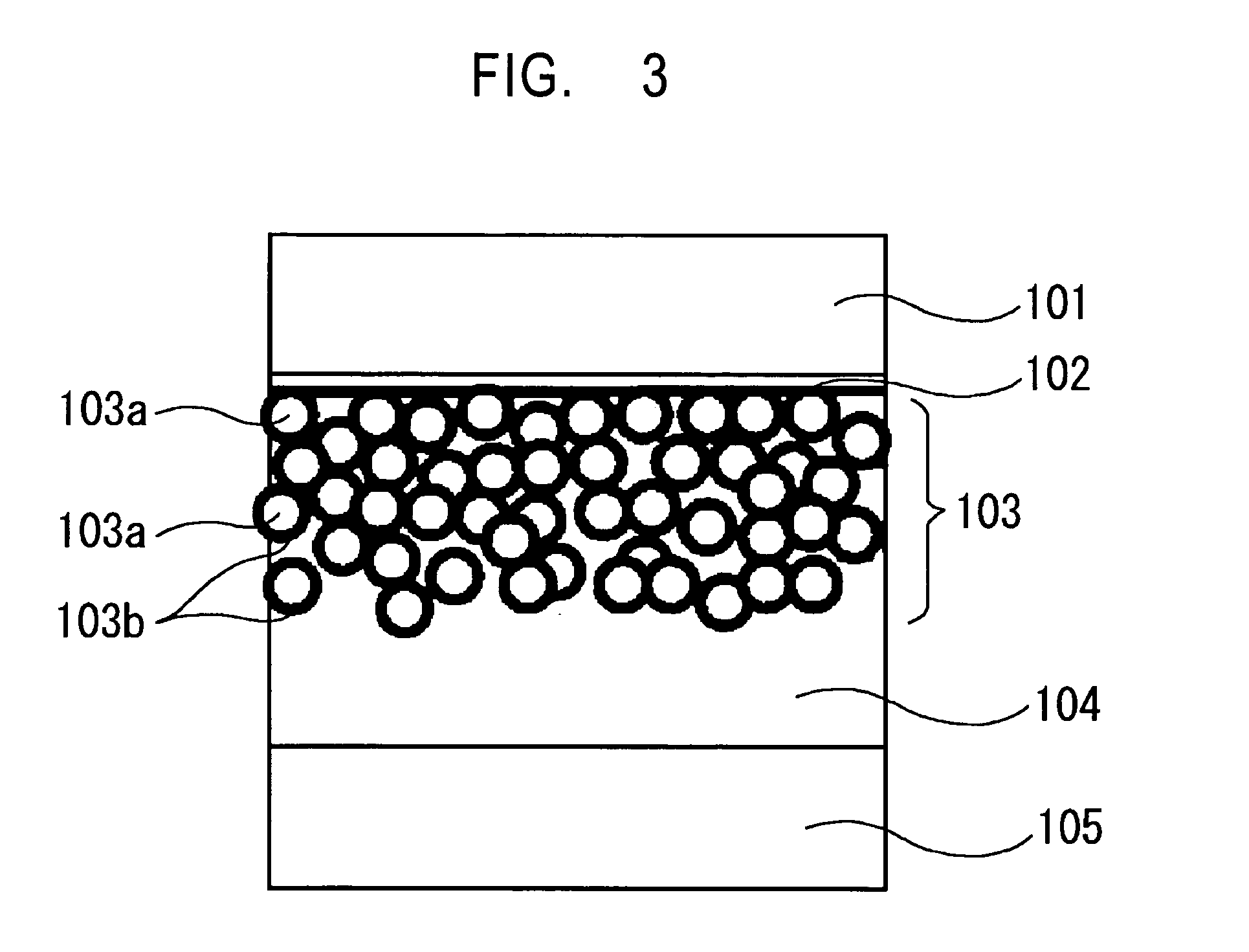Dye-sensitized solar cell
a solar cell and dye-sensitive technology, applied in the direction of light-sensitive devices, electrolytic capacitors, solid-state devices, etc., can solve the problems of low conversion efficiency, difficult to increase conversion efficiency, and further reduce conversion efficiency, so as to increase the optical path length through the light-absorbing layer, enhance the absorption of scattered light, and increase the light absorption
- Summary
- Abstract
- Description
- Claims
- Application Information
AI Technical Summary
Benefits of technology
Problems solved by technology
Method used
Image
Examples
Embodiment Construction
[0015] The present invention will now be described in detail with reference to the drawings. This invention is not limited to the description below and may be modified as appropriate without departing from the gist of the invention.
[0016] A dye-sensitized solar cell according to the present invention comprises, between an electrode formed on a transparent substrate and the counter electrode, a light-absorbing layer including light-absorbing particles carrying sensitizing dye, and an electrolyte layer, characterized in that the light-absorbing layer contains light-scattering particles different in size from the light-absorbing particles.
[0017] The size of particles in this invention may be determined microscopically or as a mean particle diameter.
[0018]FIG. 1 is a schematic cross-sectional view showing the cross-sectional structure of a dye-sensitized solar cell according to the present invention. The dye-sensitized solar cell includes a transparent substrate 1, an electrode 2, a ...
PUM
| Property | Measurement | Unit |
|---|---|---|
| particle size | aaaaa | aaaaa |
| thickness | aaaaa | aaaaa |
| thickness | aaaaa | aaaaa |
Abstract
Description
Claims
Application Information
 Login to View More
Login to View More - R&D
- Intellectual Property
- Life Sciences
- Materials
- Tech Scout
- Unparalleled Data Quality
- Higher Quality Content
- 60% Fewer Hallucinations
Browse by: Latest US Patents, China's latest patents, Technical Efficacy Thesaurus, Application Domain, Technology Topic, Popular Technical Reports.
© 2025 PatSnap. All rights reserved.Legal|Privacy policy|Modern Slavery Act Transparency Statement|Sitemap|About US| Contact US: help@patsnap.com



